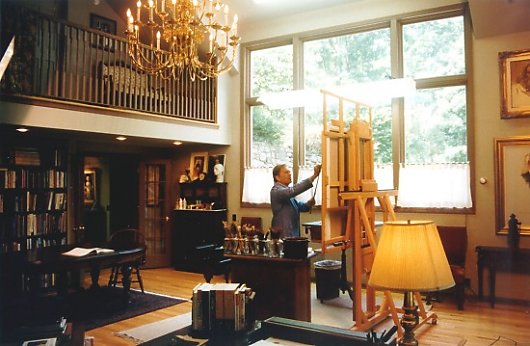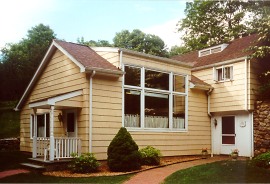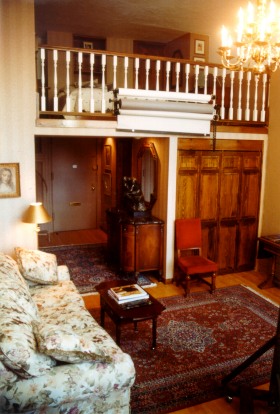American Artist, November 2000.
By Ann Kayalil

Above:
the artist at work in his Ridgefield,
Connecticut studio. Right, Exterior of the studio.
"In his studios, Sanden requires
perfect light, an ideal tempera-
ture, and a quiet and orderly
working space."
|
 |
|
|

|
Since 1974, the
artist has occupied this tenth floor studio in Carnegie Hall,
on West Fifty-Seventh Street in New York. Above, the north windows
look out toward Central Park. Right, the studio includes comfortable
living arrangements as well as efficient workspace. |
|
|

